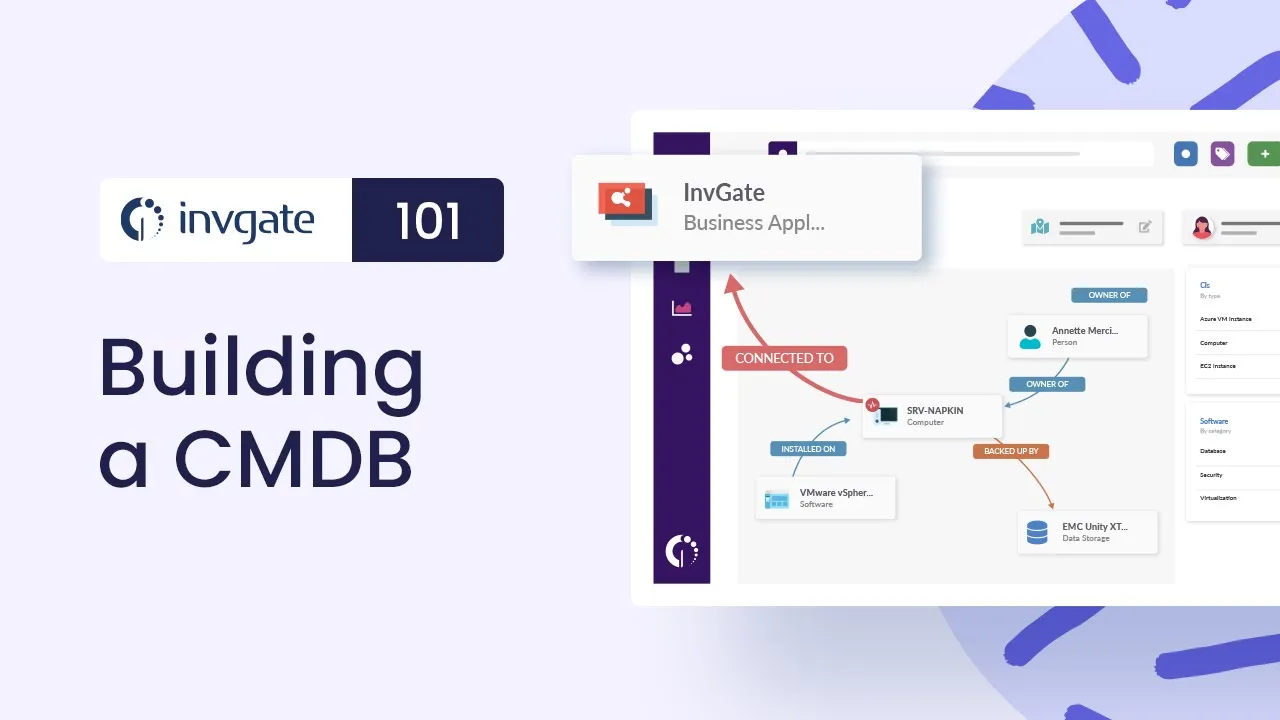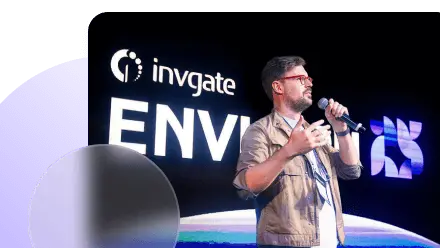When we talk about inventory visibility, we often think about warehouses or supply chains. But in IT, it’s a different story. IT inventory visibility is all about knowing exactly what’s in your digital environment, from laptops and servers to software, cloud services, and everything in between.
This visibility is key to making smarter decisions, improving security, and keeping operations running smoothly. And to get there, many organizations turn to IT Asset Management tools like InvGate Asset Management, which help bring order and clarity to even the most complex environments.
In this article, we’ll break down what IT inventory visibility means, why it matters, and how you can improve it step by step.
Why is it important to have complete IT inventory visibility?
One thing’s for sure: you can’t manage what you can’t see. That’s why the benefits of IT inventory visibility go far beyond just knowing what assets you have. Here are some of the most important ones:
- Avoid blind spots – Know exactly what devices, software, and systems are in use (and which ones shouldn't be).
- Improve security – Spot vulnerabilities, unauthorized devices, or outdated software before they become risks.
- Optimize costs – Identify unused licenses or over-provisioned assets to cut waste.
- Speed up troubleshooting – Quickly trace issues back to specific assets or users.
- Support better decision-making – Use real data to plan upgrades, replacements, or audits with confidence.
“Know what you have. Know your systems, what updates they have, and have that basic information in some proper systems that are at least more modern than an Excel sheet that we still see laying around.”
Gennady Kreukniet, CISO and Senior OT Security Consultant at CNV Cyber
IT inventory visibility challenges
Getting full visibility over your IT assets sounds simple — but in practice, it can get messy.
The biggest challenges usually come from:
- Manual processes – Using Excel for IT Asset Management or any kind of spreadsheets and scattered tools make it hard to keep data accurate and up to date.
- Shadow IT – Devices or software that are used without approval can fly under the radar.
- Disconnected systems – Without centralized data, it’s tough to get the full picture.
- Constant change – Assets move, users change, software updates… and it’s easy to lose track.
How to improve IT inventory visibility in X steps
Improving IT inventory visibility isn’t just about installing a tool and hoping for the best. It requires a clear, structured process — from the moment an asset is purchased to the day it’s retired.
Here’s a step-by-step approach to help you build and maintain complete visibility over your IT environment (and yes, InvGate Asset Management can support you all along the way).
1. Start tracking assets from procurement
IT inventory visibility doesn’t start when a device connects to your network — it starts way earlier, during procurement.
By logging asset details as soon as a purchase is approved, you’re already taking the first step toward full visibility. This includes capturing information like the purchase order, supplier, expected delivery date, and assigned cost center.
Tools like InvGate Asset Management help streamline this process by letting you register assets right from the acquisition phase. That way, you can follow them throughout their entire lifecycle without losing track of anything in between.
The earlier you start tracking, the better your data will be.
2. Build your inventory with automation

Once an asset is purchased, the next step is making sure it’s properly logged — and stays updated over time. That means going beyond manual spreadsheets and building a dynamic, automated inventory.
With InvGate Asset Management, you can use both agent-based and agentless discovery to automatically detect and register hardware, software, and cloud assets across your environment. This ensures that everything is accurately tracked from day one.
Automation also helps reduce human error, keeps your records fresh, and saves your team a ton of time. The result? A complete, real-time view of your IT landscape.
3. Centralize asset data in one platform

Even the best asset data won’t help much if it’s scattered across spreadsheets, emails, or disconnected tools. To truly improve IT inventory visibility, you need to bring everything together.
That’s not just a step. It’s also a best practice and one of the most helpful tips we can give you: centralize your asset information with an ITAM tool.
A centralized ITAM platform gives you a single source of truth, with real-time data on all your hardware, software, and cloud assets. It makes reporting easier, decisions smarter, and daily operations way more efficient.
4. Map relationships in a CMDB

Having a list of assets is great — but knowing how they’re all connected? And more importantly, how are they affecting your IT operations? That’s next-level visibility.
A Configuration Management Database (CMDB) helps you map the relationships between assets, users, and services. It shows how everything fits together, so you can understand the bigger picture and act faster when things go wrong.
With InvGate Asset Management, you can build and maintain a visual, easy-to-navigate CMDB that links hardware, software, and dependencies. This is incredibly useful for impact analysis, Change Management, and troubleshooting.
5. Monitor asset health and compliance
Your IT environment is constantly changing. Devices get reassigned, software gets updated (or not), and configurations drift over time.
That’s why it’s so important to continuously monitor the health and compliance of your assets. With InvGate Asset Management, you can track things like performance, software versions, and policy violations to catch issues early. Whether it’s a device running out of storage or a machine missing critical updates, having real-time insights helps you stay proactive instead of reactive.
6. Manage software licenses and contracts
You can’t talk about IT inventory visibility without bringing up software licenses and IT contracts. They’re often forgotten — until it’s too late and you’re either non-compliant or overpaying.
Unlike hardware, software assets are more dynamic and harder to track manually. Licenses change, users come and go, and usage can be tricky to measure, which is exactly why visibility here matters so much.
InvGate Asset Management helps you stay on top of it by tracking license allocation, usage, and renewal dates. You’ll know what’s being used, what’s sitting idle, and when it’s time to renew or cancel a contract — all from one place.
Visibility here isn’t just about control — it’s about saving time, money, and headaches.
7. Connect Asset Management with ITSM
Once your IT asset data is accurate and centralized, it shouldn’t live in a silo. The next step is to integrate it with your IT Service Management (ITSM) processes.
Why? Because having asset data available during incidents, requests, changes, or problems allows your team to work faster and make better decisions. Imagine troubleshooting an issue and instantly seeing the device’s full history (or linking assets directly to service tickets).
InvGate Asset Management integrates seamlessly with InvGate Service Management (and many other ITMS tools), connecting your inventory with your IT support workflows. This helps reduce resolution times, improve change control, and deliver better service overall.
Connect our solutions with the apps you use every day.
Explore InvGate's integrations

In conclusion
Achieving full IT inventory visibility can be challenging. But its benefits are obvious. It helps you make smarter decisions, reduce risks, improve compliance, and support better service delivery.
The good news? You don’t need to start from scratch. With the right process and the right tools (like InvGate Asset Management) gaining visibility across your entire IT environment is absolutely within reach. And if you want to see it in action, you can try it free for 30 days — no strings attached.
Now you know the steps. It’s time to turn visibility into action.















